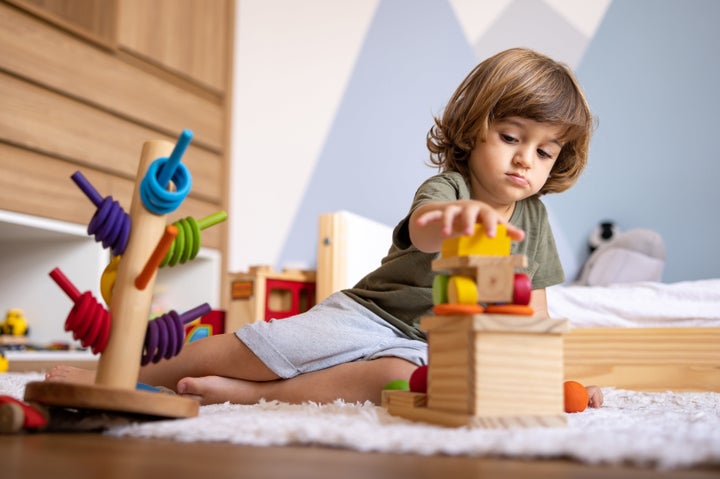
At some point, usually around the time they start to walk, parents will switch from calling their child a baby to proudly referring to them as a toddler.
Then, as they grow a bit more, it becomes unclear when you should stop calling them a toddler. Is three still within the toddler age bracket? Or are they a full-on child now? Honestly, it’s all a bit confusing.
If, like me, you’re interested in the specifics of when toddlerhood starts (and ends), here’s what you need to know.
When does a baby become a toddler?
There’s no universal age chart that tells us exactly what to call kids at what ages, but the NHS does have a helpful guide that parents can go by (and it’s also useful because this is the terminology doctors and other NHS workers will use when discussing children in healthcare settings).
A baby, according to the health service, is up to one year old. Then the term toddler is used to describe children aged one to three years old.
And then anyone aged four to 12 is known as a child. And then from 13 they enter the teens.
In the US, however, the guidance is a little different. A toddler is a child aged 1-3 years. Then they’re known as pre-schoolers between three and five years old.
Middle childhood is then known as the age between six and 11 years old.
Toddler milestones
Below is a list of the typical milestones toddlers will reach at various ages, according to NHS Cambridgeshire Community Services.
However it’s worth noting that all kids are different, so some may achieve these sooner or a bit later than others – and that’s totally OK.
At around 12 months...
Physical
- Sits well and gets into sitting position alone
- Pulls to stand from sitting position and can sit down again
- Walks around furniture
- May crawl or bottom shuffle
- May stand alone
- Help turn the pages of a book
- Throw a small ball
- Be able to pick up a piece of string with first finger and thumb
Communication
- Points at objects
- Responds to own name
- When dressing, will hold out arm or foot to help
- Makes more meaningful sounds like mamma, dadda
At around 18 months...
Physical
- Walks well
- Can walk upstairs holding an adult’s hand
- Can stack blocks on top of each other
- Turn the page of a book
Communication
- Says several single words
- Recognises and points to parts of the body
- Enjoys nursery rhymes and tries to join in
- Obeys simple commands, such as ‘bring me your shoes’

At around two years old...
Physical
- Tries to kick a ball
- Runs well
- Jumps with both feet leaving the floor at the same time
- Holds pencil by using thumb and first two fingers
- Can string small items such as beads and pasta onto a string
- Drinks from a cup with no lid
Communication
- Likes to pretend and role play
- Can name well known objects
- Correctly uses words like ‘I’, ‘Mine’ and ‘You’
- Will correctly put two – three words together
At around three years old...
Physical
- Will walk on tiptoes when shown
- Walks upstairs with alternate feet, still puts both feet on each step when coming down
- Catches a large ball
- Pedals a tricycle
- Climbs walls
Communication
- Can say own name, age and sex
- Can say numbers up to 10
- Pretend play is more vivid
- Plays with other children and takes turns
- Understands and uses ‘You’, ‘Me’, ‘I’